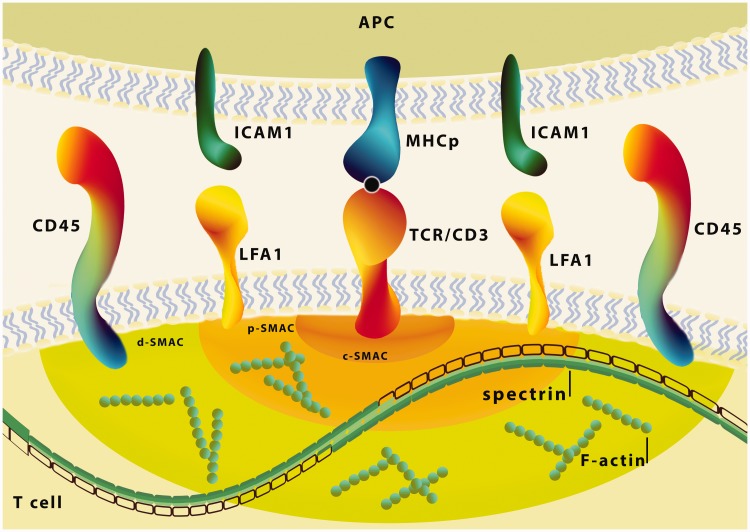Figure 4.
The role of spectrin in immunological synapse formation. Schema of the immunological synapse (IS) and representative protein interactions in the synaptic space. In the central SMAC, the T cell receptor (TCR)/CD3 complex interacts with MHC-peptide. The adhesion molecules on the surface of both cells (LFA-1–ICAM-1) are responsible for the formation and stabilization of the IS, as well as for initiating signal transduction pathways activated by TCR. The distal ring of IS is rich in proteins, such as CD45 and F-actin controls lamellipodia and filopodia formation. The spectrin through the presence at sites of immunological synapses in T cells and interaction with actin, CD45 and regulation of LFA-1 integrin clustering, may participate in this dynamic actin-rich process which is essential for immunological synapse formation. c-SMAC: central-SMAC; d-SMAC: distal-SMAC; ICAM-1: intercellular adhesion molecule1; LFA-1: lymphocytes function-associated antigen 1; p-SMAC: peripheral-SMAC; SMAC: supramolecular activation cluster. (A color version of this figure is available in the online journal.)

